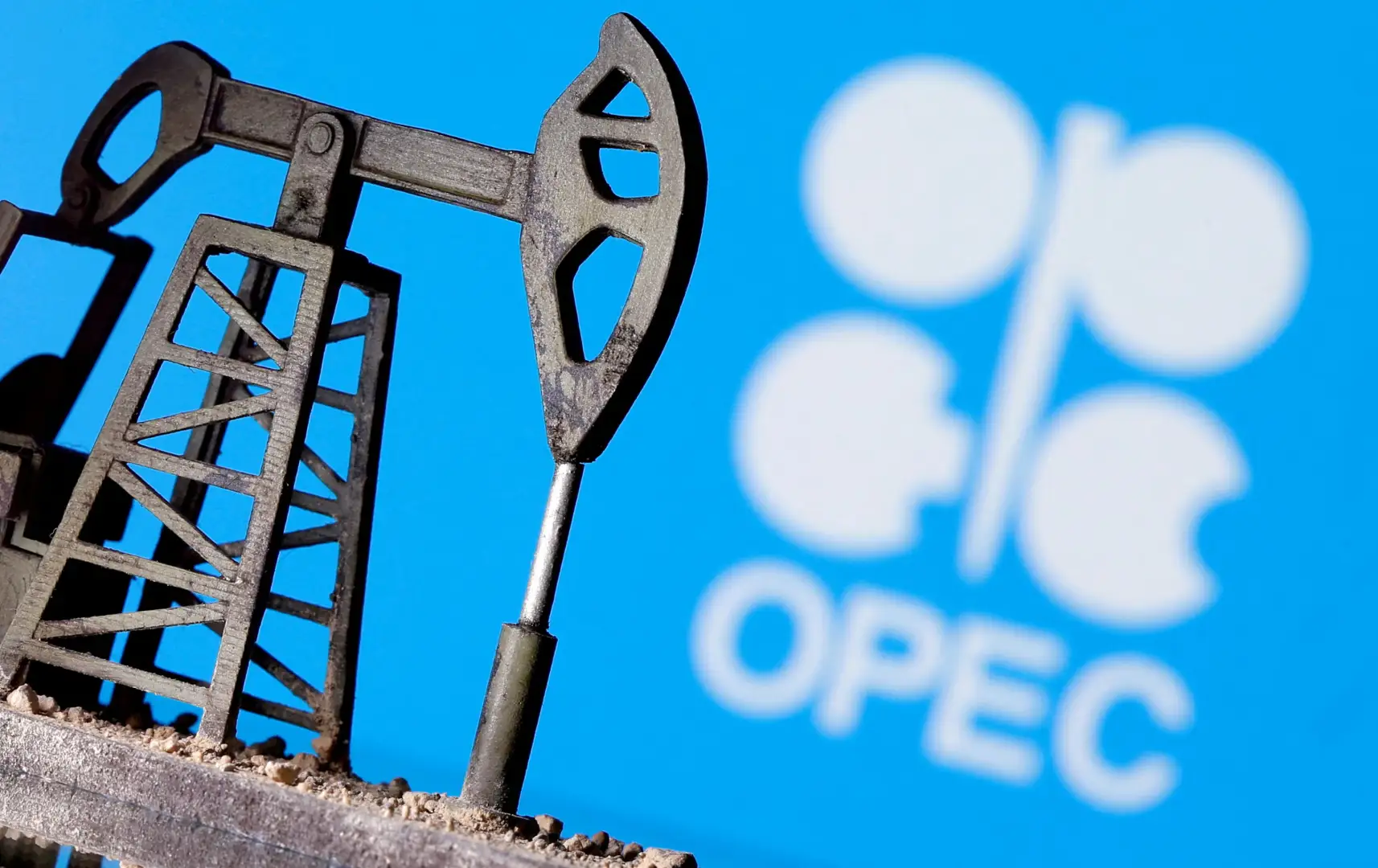The Organization of the Petroleum Exporting Countries (OPEC) has released its highly anticipated World Oil Outlook 2050 report, presenting a revised and notably bullish forecast for global oil and overall energy demand in the medium and long term. This optimistic projection, however, comes alongside a cautious reduction in short-term oil demand projections for the next four years, primarily attributed to a slowdown in China’s economic growth. The report underscores OPEC’s conviction that despite the accelerating global energy transition, oil will remain an indispensable component of the world’s energy mix for decades to come, driven by fundamental demographic shifts, robust economic expansion, and the emergence of new energy-intensive industries.
According to the comprehensive report, global oil demand is projected to expand by nearly 19 percent, surging to an impressive 123 million barrels per day (bpd) by 2050. This long-term outlook contrasts with a more immediate forecast, where oil demand is expected to increase by 9 percent to 113.3 million bpd by 2030, up from 103.7 million bpd in 2024. Overall energy demand in the long term is also anticipated to witness a substantial increase of 23 percent, reaching 378 million barrels of oil equivalent per day by 2050. These figures, released on Thursday, paint a picture of enduring reliance on hydrocarbons, even as the world grapples with climate change objectives. For a detailed overview of the report’s findings, an Anadolu Agency report provides further context.
The Core Projections: A Detailed Look at OPEC’s World Oil Outlook 2050
OPEC’s annual World Oil Outlook (WOO) serves as a critical reference point for energy market analysis, providing insights into future supply, demand, and investment trends. The 2025 edition, covering the period up to 2050, reaffirms the organization’s long-held view that oil demand is far from peaking.
The projection of 123 million bpd by 2050 represents a significant upward revision from previous forecasts, reflecting OPEC’s assessment of persistent underlying drivers for oil consumption. This long-term growth is anchored by the continued expansion of global economies, particularly in the developing world, and the inherent energy requirements associated with improving living standards for billions. The “barrels of oil equivalent per day” (boepd) metric for overall energy demand encompasses all forms of energy, including oil, natural gas, coal, renewables, and nuclear power, indicating a broad increase in global energy consumption across the board.
While the long-term outlook is robust, OPEC has tempered its immediate expectations. The organization cut its world oil demand forecasts for 2026, 2027, 2028, and 2029 compared to last year’s report. Specifically, next year’s world oil demand is now projected at 106.3 million bpd, down from the previous forecast of 108 million bpd. For 2027, the projection stands at 107.9 million bpd (down from 109.6 million bpd), for 2028 at 109.8 million bpd (down from 111 million bpd), and for 2029 at 111.6 million bpd (versus 112.3 million bpd previously projected). These short-term adjustments are primarily driven by concerns over China’s economic performance, which has shown signs of softening, impacting the world’s largest crude importer. This near-term outlook is further discussed in an Investors King article.
Driving Forces Behind the Demand Surge: Demographics, Development, and Digitalization
OPEC Secretary General Haitham Al Ghais articulated the multifaceted drivers underpinning this projected surge in long-term oil demand. He pointed to “expanding economic growth, rising populations, increasing urbanisation, new energy-intensive industries like artificial intelligence, and the need to bring energy to the billions without it.” These factors collectively paint a picture of a world still heavily reliant on traditional energy sources to power development and improve human well-being.
- Population Growth: The global population is expected to reach 9.7 billion by 2050, a significant increase from 8.2 billion in 2024. This growth, particularly concentrated in developing nations across Asia and Africa, inherently translates into higher demand for energy in all its forms, including oil for transportation, heating, and industrial processes. A growing population requires more housing, food production, infrastructure, and consumer goods, all of which are energy-intensive. Furthermore, the working-age population is set to increase by 800 million over the same period, reaching about 6.1 billion, contributing to increased economic activity and energy consumption.
- Urbanization: The global urbanization rate is also expected to rise significantly, from 58 percent in 2024 to 68 percent by 2050. This means approximately 1.9 billion people will move to cities over the next quarter-century. Urbanization is a powerful driver of energy demand, as cities require extensive transportation networks, new infrastructure development (buildings, roads, utilities), increased industrial activity, and higher consumption patterns. The concentration of people and economic activity in urban centers necessitates a reliable and substantial energy supply, much of which will continue to be met by oil-derived products.
- Economic Expansion: The world economy is projected to more than double in size, reaching an astounding $358 trillion by 2050. This unprecedented economic growth, coupled with a projected rise in global average income, will fuel demand for energy. As incomes rise, so does the demand for personal mobility (cars, motorcycles), consumer goods (plastics, electronics), and services that rely on energy-intensive processes. Industrialization in developing economies, a key component of economic growth, will also drive significant demand for oil as a feedstock and fuel.
- New Energy-Intensive Industries (Artificial Intelligence): A critical, and often underestimated, factor in future energy demand is the rapid expansion of new energy-intensive industries, particularly artificial intelligence (AI) and data centers. The computational power required for AI models, machine learning, and vast data processing consumes enormous amounts of electricity. For instance, new research indicates that data centers consumed approximately 415 TWh of electricity last year, with AI systems already accounting for about 20% of this total. While this electricity can come from various sources, the sheer scale of demand often necessitates reliable baseload power, which frequently includes fossil fuels. The construction and operation of massive data centers, which are the backbone of the digital economy and AI development, are highly energy-intensive, requiring significant power for computing and cooling. This burgeoning digital infrastructure is creating a new, substantial source of energy demand that was less prominent in previous long-term energy outlooks.
- Addressing Energy Poverty: A core tenet of OPEC’s outlook is the moral and economic imperative to bring energy to the billions who currently lack access. Achieving universal energy access, a key Sustainable Development Goal, will inherently increase global energy demand. The IEA highlights that 760 million people lived without electricity access in 2022, with over 80% of them in sub-Saharan Africa. For many developing regions, oil and gas remain the most accessible and affordable energy sources for cooking, heating, lighting, and powering basic economic activities. As efforts intensify to alleviate energy poverty, the demand for all forms of energy, including hydrocarbons, will naturally rise.
- The Paris Agreement and US Withdrawal: The report also subtly acknowledges the impact of policy decisions on energy demand. The US withdrawal from the Paris Agreement, a landmark international accord aimed at reducing greenhouse gas emissions, is cited as a factor that could potentially result in higher demand for hydrocarbons, including oil and gas. While the US has since rejoined the agreement, the initial withdrawal signaled a potential shift in commitment to decarbonization, which could influence global energy consumption patterns.
Regional Dynamics: Where Demand Will Grow and Decline
OPEC’s World Oil Outlook highlights a significant geographical shift in oil demand growth, with countries outside the Organisation for Economic Co-operation and Development (non-OECD) leading the charge for both medium and long-term forecast periods.
- Non-OECD Leadership: The non-OECD oil demand during the long term is projected to increase by almost 28 million bpd. This reflects the ongoing industrialization, urbanization, and population growth in these regions, which are in earlier stages of economic development compared to their OECD counterparts.
- India’s Pivotal Role: India is singled out as a primary driver of this growth, projected to add a remarkable 8.2 million bpd to global oil demand between 2024 and 2050. India’s burgeoning economy, rapidly expanding middle class, increasing vehicle ownership, and robust industrial sector are key factors. As India continues its trajectory of economic development, its energy needs will surge, with oil playing a crucial role in meeting demand for transportation, petrochemicals, and other sectors.
- Africa and the Middle East: Combined demand in India, other Asian countries, the Middle East, and Africa is set to increase by a staggering 22.4 million bpd between 2024 and 2050. Africa, with its rapidly growing population and increasing urbanization, will require significant energy to power its development, industrialization, and improve living standards. The ISS African Futures report and CoM SSA’s Africa Energy Outlook delve into the continent’s energy landscape. The Middle East, while a major oil producer, also has rapidly growing domestic energy consumption driven by population growth, industrial expansion, and significant infrastructure projects, as noted in an Energy Mix article.
- China’s Nuance: Despite its massive economy and status as the world’s biggest crude importer, China’s oil demand is projected to increase by less than 2 million bpd over the same period. This reflects China’s ongoing economic restructuring towards a more services-oriented and less energy-intensive model, as well as its aggressive investments in renewable energy and electric vehicles. While China’s overall energy demand will continue to grow, its oil demand growth rate is expected to moderate compared to its past trajectory and relative to other developing giants like India.
- OECD Decline: Conversely, OECD oil demand is projected to witness a decline of 8.5 million bpd. This trend is attributed to several factors, including mature economies, ongoing efforts in energy efficiency, the increasing penetration of electric vehicles, and significant investments in renewable energy sources. Developed nations are generally further along in their energy transition pathways, with policies and technologies aimed at reducing fossil fuel consumption.
Sectoral Demand: Road Transport, Petrochemicals, and Aviation Remain Pillars
OPEC’s report emphasizes that specific sectors will continue to play a key role in boosting demand for oil, reinforcing its essential nature in the global economy.
- Road Transport: The transportation sector accounted for more than 57 percent of global oil demand in 2024 and is projected to retain this significant share over the entire forecast period. While there is a strong global push for electric vehicles (EVs), particularly in light-duty passenger cars, the transition is not uniform or immediate across all segments. Heavy-duty road transport (trucks, buses), aviation, and maritime shipping continue to rely heavily on liquid fuels due to current technological limitations and infrastructure requirements for electrification. The sheer scale of existing internal combustion engine (ICE) vehicle fleets and the slower turnover rate in many developing countries ensure sustained demand for gasoline and diesel.
- Petrochemicals: A significant demand increase of 4.7 million bpd is also projected in the petrochemicals sector. Oil serves as a crucial feedstock for the production of a vast array of petrochemicals, which are the building blocks for plastics, fertilizers, synthetic fibers, pharmaceuticals, and countless other essential materials. The IEA projects that petrochemicals will account for 17.4% of global oil use by 2030. The growing global population, rising incomes, and expanding consumer markets will continue to drive demand for these products, directly translating into higher oil consumption by the petrochemical industry. This sector’s growth is often overlooked in discussions about oil demand but represents a fundamental and expanding use case.
- Aviation: The aviation sector remains almost entirely dependent on jet fuel derived from crude oil. As global connectivity increases, air travel is projected to grow, particularly in developing regions, leading to sustained and increasing demand for aviation fuel. The global aviation fuel market is expected to reach US$ 599.1 billion by 2031, driven by rising air travel demand and sustainable innovations. While research into sustainable aviation fuels (SAFs) is ongoing, their large-scale production and widespread adoption are still years away, ensuring oil’s dominance in this sector for the foreseeable future.
“Oil underpins the global economy and is central to our daily lives,” Mr. Al Ghais reiterated, confidently stating, “There is no peak oil demand on the horizon.” This assertion directly challenges narratives that foresee a rapid decline in oil consumption.
OPEC+’s Strategy: Balancing Supply, Demand, and Investment
In anticipation of higher demand and to ensure market stability, OPEC+ countries have been strategically boosting production since April, following several years of coordinated production curtailments.
- Production Adjustments: The group, comprising OPEC members and non-OPEC allies led by Russia, announced an increase of 138,000 bpd in April. This was followed by further increases of 411,000 bpd for each of May, June, and July, and an additional boost of 548,000 bpd for August. These gradual increases reflect a cautious approach to rebalancing the market, ensuring that supply meets demand without creating excessive volatility.
- Market Stability and Investment: Suhail Al Mazrouei, the UAE’s Minister of Energy and Infrastructure, emphasized the rationale behind these adjustments. “You can see that even with the increases for several months, we haven’t seen a major build-up in inventories, which means the market needed those barrels,” he stated in Vienna. He further underscored the importance of market stability for long-term investment: “What we want is stability and you cannot be short-sighted just by looking at the price. We need the price to be right for investments to happen,” he added, lamenting that countries with large oil reserves were still not investing enough to meet future demand. This highlights a persistent concern among producers about underinvestment in the upstream sector, which could lead to supply shortages in the future.
- UAE’s Capacity Expansion: The UAE, a key OPEC member, has ambitious plans to significantly boost its oil production capacity. Mr. Al Mazrouei told reporters that the UAE would be able to increase its oil production capacity to 6 million bpd after 2027 if market conditions warrant it. This is a substantial increase from its previously stated target capacity of 5 million bpd, signaling the UAE’s readiness to play a larger role in meeting global energy demand. Such capacity expansions require massive, long-term investments in exploration, development, and infrastructure.
- Investment Requirements: Mr. Al Ghais also underscored the critical importance of boosting investments across the entire oil sector. He projected investment requirements of $18.2 trillion until 2050, an increase from last year’s projection of $17.4 trillion. “It is vital that these investments are made for consumers and producers everywhere, as well as for the effective functioning of the global economy at large,” Mr. Al Ghais asserted. Underinvestment, driven by uncertainty about future demand and environmental pressures, poses a significant risk to global energy security, potentially leading to supply shortages and price spikes in the future.
Market Volatility and Geopolitical Undercurrents
The oil markets have remained volatile throughout the year, influenced by a confluence of economic uncertainties and geopolitical tensions.
- Recent Price Dynamics: Crude prices started the year strongly, with Brent, the international benchmark, peaking at more than $82 a barrel on January 15. West Texas Intermediate (WTI), the gauge for US crude, hit almost $79 per barrel on the same day. However, these gains were subsequently eroded by a combination of factors.
- Factors Affecting Prices: Demand concerns, stemming from a slowing global economy, particularly the less-than-stellar growth in China (the world’s biggest crude importer), have weighed heavily on crude prices. Economic slowdowns typically translate to reduced industrial activity and transportation, thereby lowering oil consumption.
- Geopolitical Tensions: Geopolitical events have played a significant role in market volatility. US President Donald Trump’s push to impose hefty tariffs on trade partners has been a major driver of declining oil prices, as trade disputes can dampen global economic growth and, consequently, energy demand. An Oil & Gas 360 article delves into how tariff expectations can impact crude prices. Furthermore, the ongoing Israel-Iran conflict has introduced significant supply-side risks. Tensions in the Middle East, a critical oil-producing region and a major transit route for crude shipments, often lead to supply fears and price spikes. The potential for disruption to oil flows through key chokepoints like the Strait of Hormuz, or direct impacts on production facilities, can send shockwaves through global markets, illustrating the fragility of the global oil supply chain to geopolitical instability. A Julius Baer analysis provides insights into the conflict’s impact on oil prices and broader financial markets.
Conclusion: Oil’s Enduring Role in a Transforming World
OPEC’s latest World Oil Outlook 2050 delivers a clear message: oil demand is not on the cusp of an imminent decline. While the global energy transition towards cleaner sources is undeniable and gaining momentum, the organization firmly believes that the sheer scale of global economic growth, burgeoning populations, increasing urbanization, the energy demands of new technologies like AI, and the imperative to bring energy access to billions will ensure oil’s enduring and central role in the world’s energy landscape for at least the next quarter-century.
The report serves as a stark reminder that the path to a sustainable energy future is complex and multifaceted. It highlights the continued need for substantial investment in the oil sector to ensure adequate supply, prevent future shortages, and maintain market stability. As the world navigates the dual challenges of meeting growing energy demand and addressing climate change, OPEC’s outlook suggests that oil will remain a critical, albeit evolving, component of the global energy mix, particularly in the rapidly developing economies of Asia, Africa, and the Middle East. The delicate balance between supply, demand, and geopolitical stability will continue to shape the trajectory of oil markets in the years to come.
Ready to take your career to the next level? Join our dynamic courses: ACCA, HESI A2, ATI TEAS 7 , HESI EXIT , NCLEX – RN and NCLEX – PN, Financial Literacy!🌟 Dive into a world of opportunities and empower yourself for success. Explore more at Serrari Ed and start your exciting journey today! ✨
photo source: Google
By: Montel Kamau
Serrari Financial Analyst
11th July, 2025
Article, Financial and News Disclaimer
The Value of a Financial Advisor
While this article offers valuable insights, it is essential to recognize that personal finance can be highly complex and unique to each individual. A financial advisor provides professional expertise and personalized guidance to help you make well-informed decisions tailored to your specific circumstances and goals.
Beyond offering knowledge, a financial advisor serves as a trusted partner to help you stay disciplined, avoid common pitfalls, and remain focused on your long-term objectives. Their perspective and experience can complement your own efforts, enhancing your financial well-being and ensuring a more confident approach to managing your finances.
Disclaimer: This article is for informational purposes only and does not constitute financial advice. Readers are encouraged to consult a licensed financial advisor to obtain guidance specific to their financial situation.
Article and News Disclaimer
The information provided on www.serrarigroup.com is for general informational purposes only. While we strive to keep the information up to date and accurate, we make no representations or warranties of any kind, express or implied, about the completeness, accuracy, reliability, suitability, or availability with respect to the website or the information, products, services, or related graphics contained on the website for any purpose. Any reliance you place on such information is therefore strictly at your own risk.
www.serrarigroup.com is not responsible for any errors or omissions, or for the results obtained from the use of this information. All information on the website is provided on an as-is basis, with no guarantee of completeness, accuracy, timeliness, or of the results obtained from the use of this information, and without warranty of any kind, express or implied, including but not limited to warranties of performance, merchantability, and fitness for a particular purpose.
In no event will www.serrarigroup.com be liable to you or anyone else for any decision made or action taken in reliance on the information provided on the website or for any consequential, special, or similar damages, even if advised of the possibility of such damages.
The articles, news, and information presented on www.serrarigroup.com reflect the opinions of the respective authors and contributors and do not necessarily represent the views of the website or its management. Any views or opinions expressed are solely those of the individual authors and do not represent the website's views or opinions as a whole.
The content on www.serrarigroup.com may include links to external websites, which are provided for convenience and informational purposes only. We have no control over the nature, content, and availability of those sites. The inclusion of any links does not necessarily imply a recommendation or endorsement of the views expressed within them.
Every effort is made to keep the website up and running smoothly. However, www.serrarigroup.com takes no responsibility for, and will not be liable for, the website being temporarily unavailable due to technical issues beyond our control.
Please note that laws, regulations, and information can change rapidly, and we advise you to conduct further research and seek professional advice when necessary.
By using www.serrarigroup.com, you agree to this disclaimer and its terms. If you do not agree with this disclaimer, please do not use the website.
www.serrarigroup.com, reserves the right to update, modify, or remove any part of this disclaimer without prior notice. It is your responsibility to review this disclaimer periodically for changes.
Serrari Group 2025












